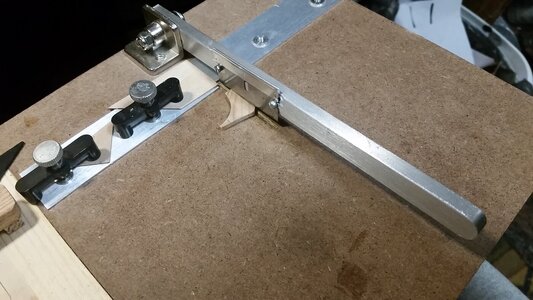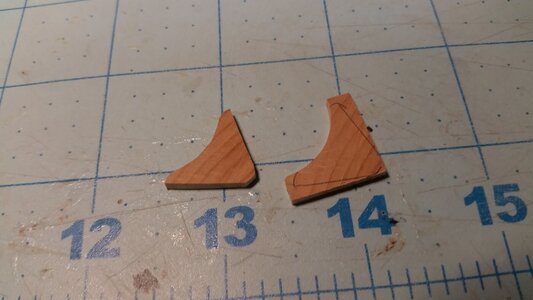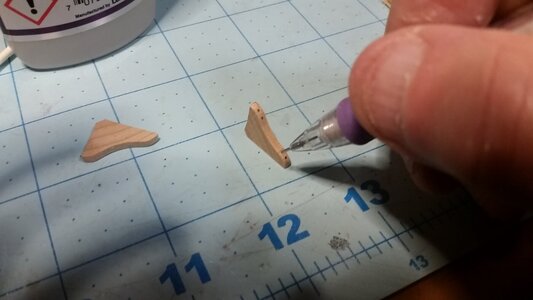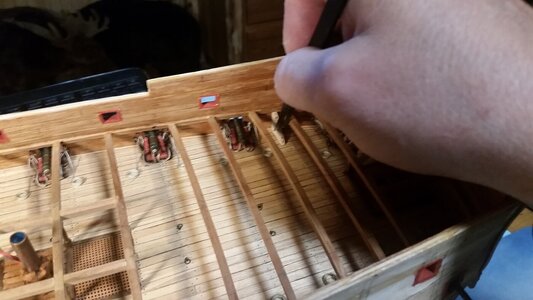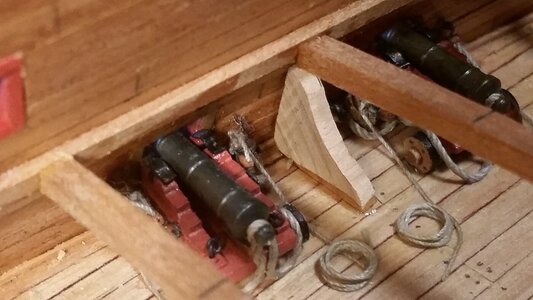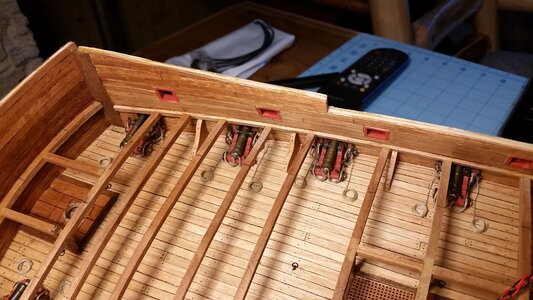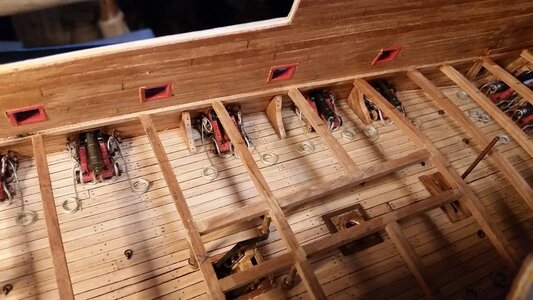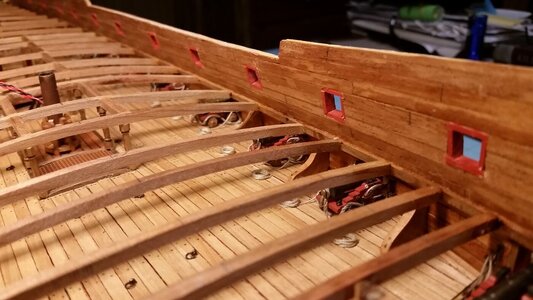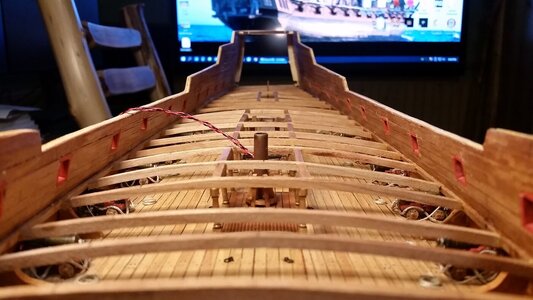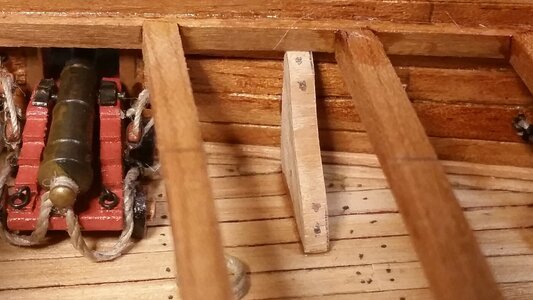Lots of work fitting and installing hanging and dagger knees was done on the port side today. There were several gun ports close to beams which required dagger knees.
The pinewood corner molding pieces cut earlier were sanded on both sides. One knee was cut and shaped to fit a location near the midships. this will form a pattern for most of the others, which vary slightly because of changes in the angle of bulwark and a slight increase in deck height as you go aft.
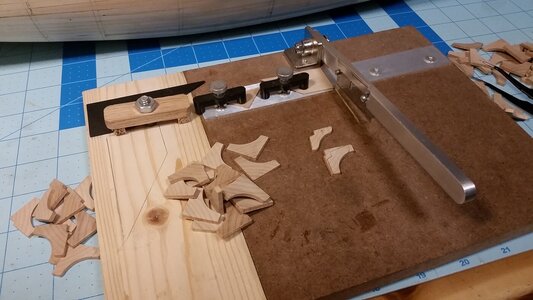
The basic outline of each knee is cut out with the chopper and then it is sanded to shape. A pencil is used to simulate the bolt heads.
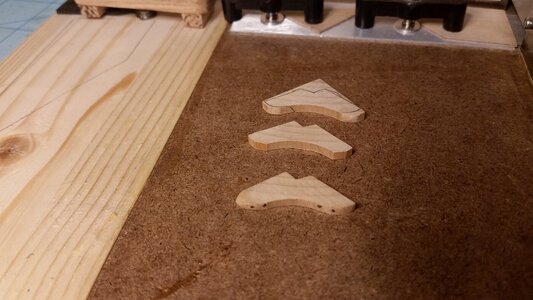
The knee is test fit before being glued with PVA glue. I used to use CA glue for this, because it was faster, but one of the knees popped loose on the deck below because of the glues brittleness. PVA is much more flexible but takes longer to dry. Well fitted parts make for a better and faster bond. Excess glue is scraped away with end of a wooden stick before it dries. This is not precise work as far as the joints go, but when photographed after it is done, the impression is still realistic enough.
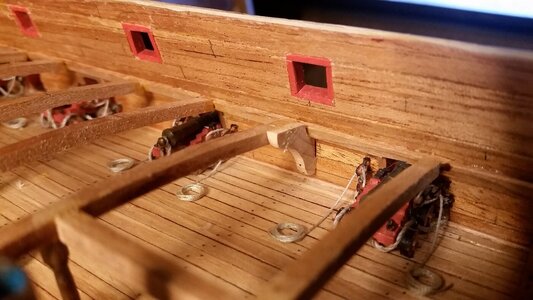
Where beams are close to or over gun ports, the carriages would interfere with hanging knees, so dagger knees are used instead. They are angles off to one side or the other to make room for the guns when required. The simple way to make them is by sanding the top edge to the desired angle, usually 45 degrees, and glue a second piece on top as shown.
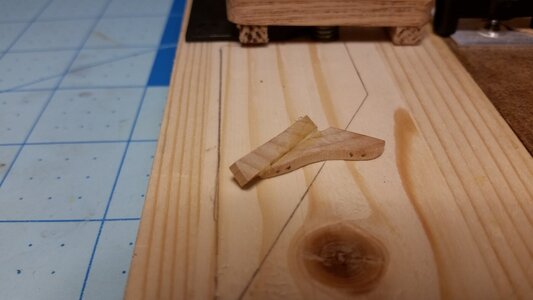
The ends are sanded to the proper shape and the knee is test fitted. After any needed sanding to make adjustments, it is glued in place.
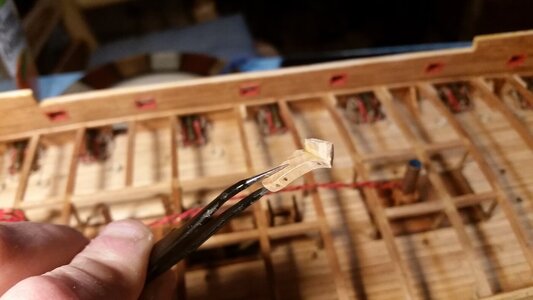
The port bow area has all the hanging knees installed, and three dagger knees can be seen. A knee braces the forward bulkhead to the bulwark as well.
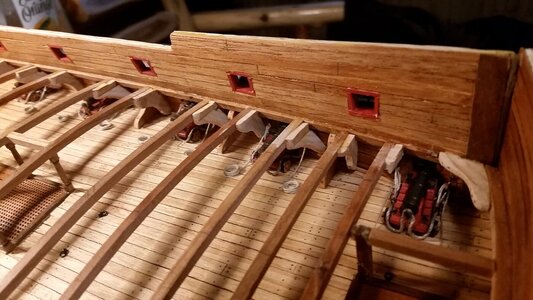
Farther aft, more knees were installed. This is all the farther I got today. The top edges of the knees don't have to be perfectly even with the top surface of the beams because a thin false deck will be laid over this and any gaps will not be visible. When all knees are done, they will be coated with satin finish to blend them in.
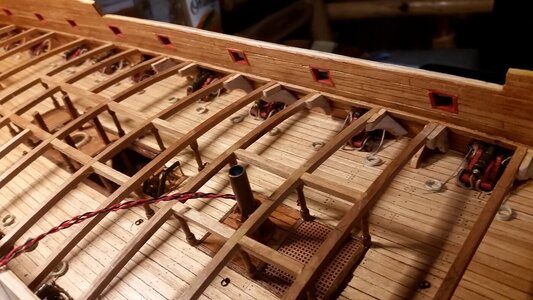
Progress so far.
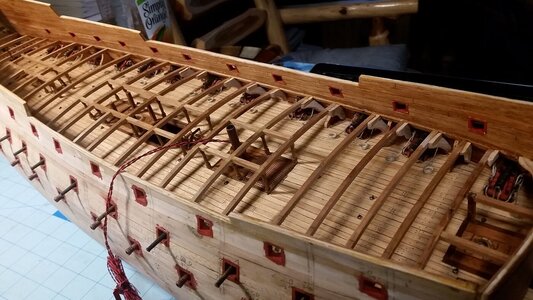
 Music is good for the repetive jobs.Depeche Mode for me for a while after learning of the passing of Andy Fletcher,their keyboard player yesterday
Music is good for the repetive jobs.Depeche Mode for me for a while after learning of the passing of Andy Fletcher,their keyboard player yesterday
 Music is good for the repetive jobs.Depeche Mode for me for a while after learning of the passing of Andy Fletcher,their keyboard player yesterday
Music is good for the repetive jobs.Depeche Mode for me for a while after learning of the passing of Andy Fletcher,their keyboard player yesterday




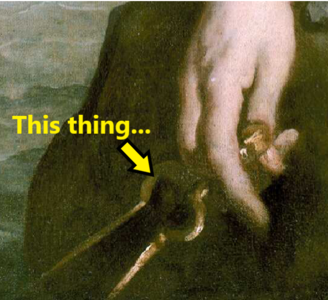
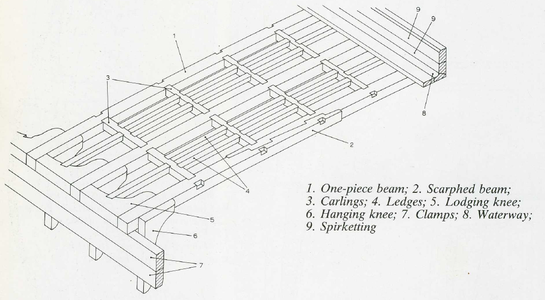

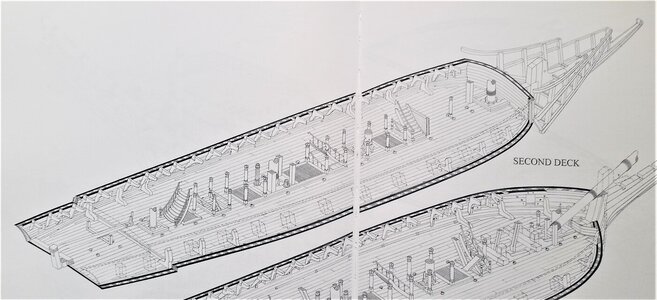
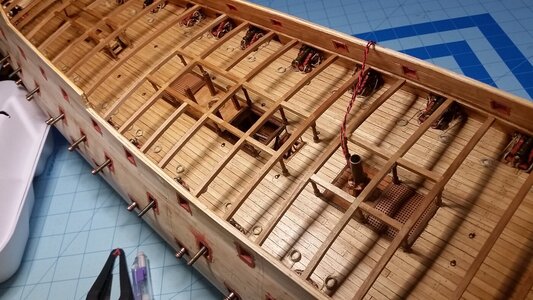
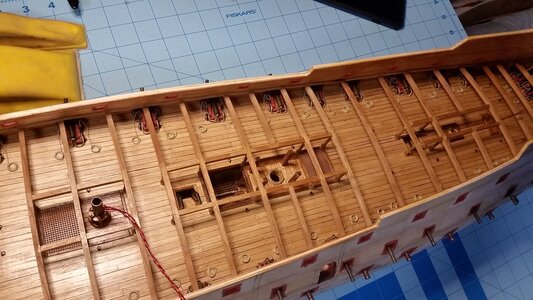
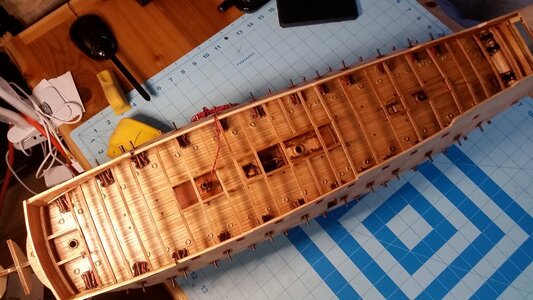
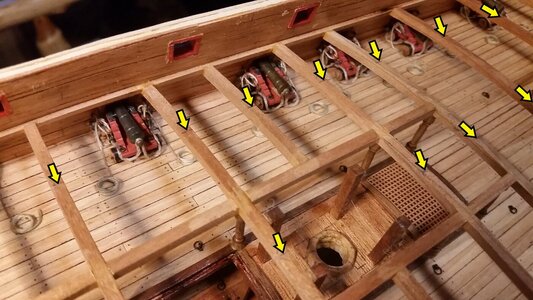
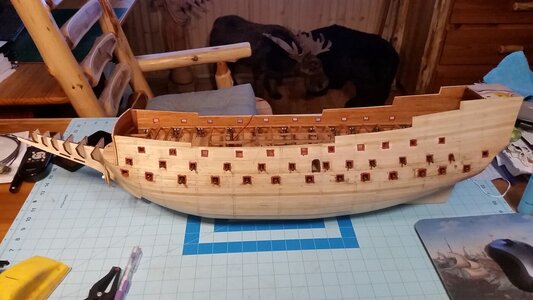



 ).
).